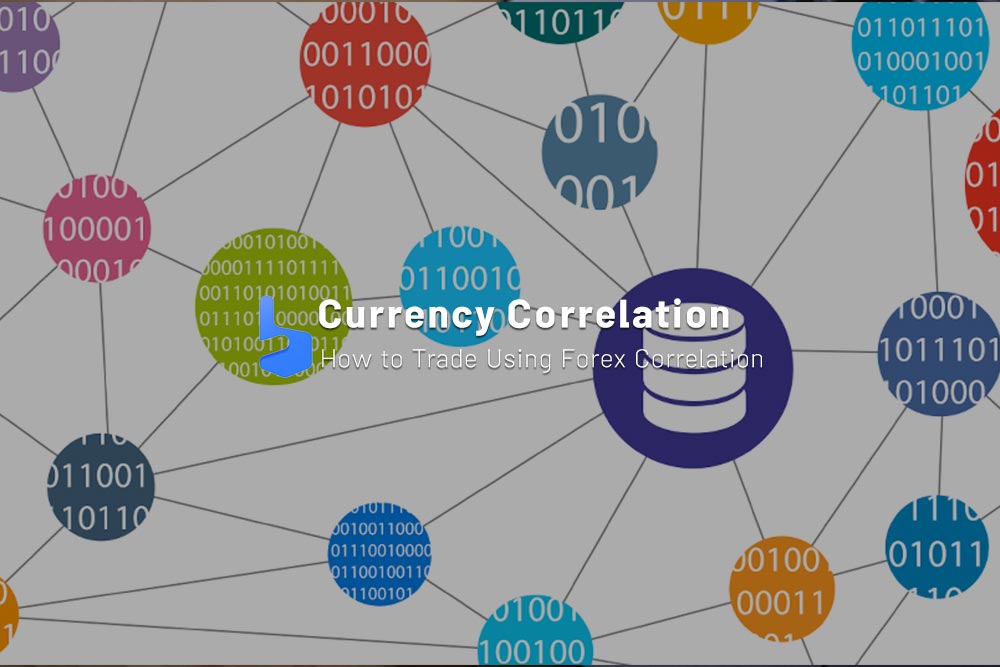What you are about to read:
The term “Currency Correlation” refers to the correlation between currency pairs in the Forex market. It is a statistical measure of the relationship between the values and movements of these currency pairs. When two pairs move up simultaneously, it’s considered a positive correlation. On the other hand, if one goes up while the other goes down, it’s a negative correlation.
Understanding and monitoring the correlation between currency pairs is crucial for Forex traders, as it can impact their risk level when trading in the Forex market. This article by Brokerland explains how to determine and calculate Forex correlations, their influence on trades and trading systems, and the tools used to track correlations between currency pairs.
Key points:
- Forex pairs can move together with a positive or negative correlation.
- The correlation coefficient formula indicates the strength of their connection.
- Readings below -70 and above 70 are considered strong, while readings between -70 and 70 are considered weaker.
- Commodities can also have correlations with each other and with Forex.
What is the currency correlation in Forex trading?
Currency correlation is the relationship between two currency pairs. When two pairs move in the same direction, it’s called a positive correlation. When they move in opposite directions, it’s a negative correlation. If the pairs move randomly without any discernible relationship, there is no correlation. Negative correlation can also be referred to as an inverse correlation.
Understanding the correlation between currency pairs is crucial for traders as it can directly impact the outcomes of Forex trades. For example, imagine a trader purchasing two different currency pairs that have a negative correlation. Profits in one pair might offset losses in the other, often used as a hedging strategy.
However, buying two correlated pairs can double the risk and profit potential since both trades will result in either gains or losses.
What is the Forex Correlation coefficient between currency pairs?
The correlation coefficient indicates how strong or weak the forex correlation between two pairs is. It’s expressed as values ranging from -100 to 100 or -1 to 1, with decimals denoting the coefficient.
If the coefficient falls within the range of -100 to -1, it means the pairs move in nearly opposite directions. Conversely, a coefficient above 100 suggests that the pairs move almost identically in the same direction.
If the forex correlation coefficient is below -70 or above 70, it is considered a strong correlation, as the movements of one pair largely mirror the movements of the other. On the other hand, coefficients between -70 and 70 indicate weaker correlations. Coefficients close to zero imply that both pairs have little to no relationship or currency correlation with each other.
The formula for calculating the correlation coefficient:
While the formula for calculating the correlation coefficient of currency pairs in Forex may seem complex, the general concept is to take data points from two currency pairs and compare these values to the averages of the data points for those currency pairs. The top part of the equation represents covariance, and the bottom part represents standard deviation.

Forex Correlations in Currency pairs
The table below displays the currency correlations between some of the traded currency pairs worldwide. You can compare each currency on the y-axis with the currencies on the x-axis to see how they correlate with each other. For example, the forex correlation between EUR/USD and GBP/USD is 77, which is quite high. This table provides valuable information for traders looking to understand how various currency pairs move in relation to each other in the Forex market.
While currency pairs don’t always move in the exact same direction, they tend to move together most of the time. For example, GBP/USD and EUR/GBP have a strong negative correlation of -90, meaning they often move in opposite directions.
Monitoring currency correlations is crucial because, even in this small table of currency pairs, there are several strong correlations. A trader might unintentionally buy GBP/USD and sell EUR/GBP, assuming they have different positions. However, since these pairs have a high negative correlation, they are known to move in opposite directions. Therefore, the trader is likely to end up either winning or losing on both positions, as the trades are not entirely independent.
What does it mean for Forex currency pairs to be uncorrelated?
Currency pairs are considered uncorrelated when they move independently of each other. This can happen when the currencies involved in each pair are different and are influenced by different economies.
For example, both EUR/USD and GBP/USD contain the US dollar, and the Eurozone and the UK have economies that are somewhat similar. Therefore, they tend to move together, though not always. However, EUR/JPY and AUD/USD have no similar currencies. In fact, the Eurozone, Japan, Australia, and the United States all have distinct economies. Consequently, the forex correlation between these pairs is lower.
Forex Correlation Indicator in MetaTrader 4
There isn’t a default currency correlation indicator in the MetaTrader 4 trading platform. However, you have a wide range of downloadable indicators available in the Market and Code Base sections of the platform. These are often created and shared by third-party users, so some indicators may be more effective than others.
Some of these indicators are free, while others may come at a cost. You can filter indicators by name, so by typing “correlation” in the Code Base section, you’ll often find relevant add-ons. These indicators can be easily installed on the MT4 platform.
Summary
In this article to learn forex trading, one of the most basic topics, the forex correlation, was explained. There are other types of correlation, such as the correlation of the dollar and oil prices in Forex, which have been discussed in other articles and you can read it, too.










